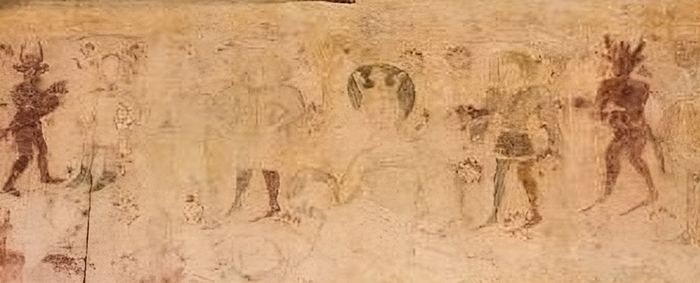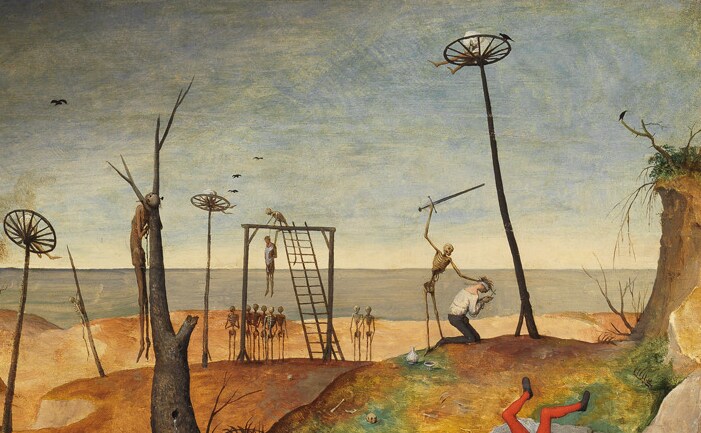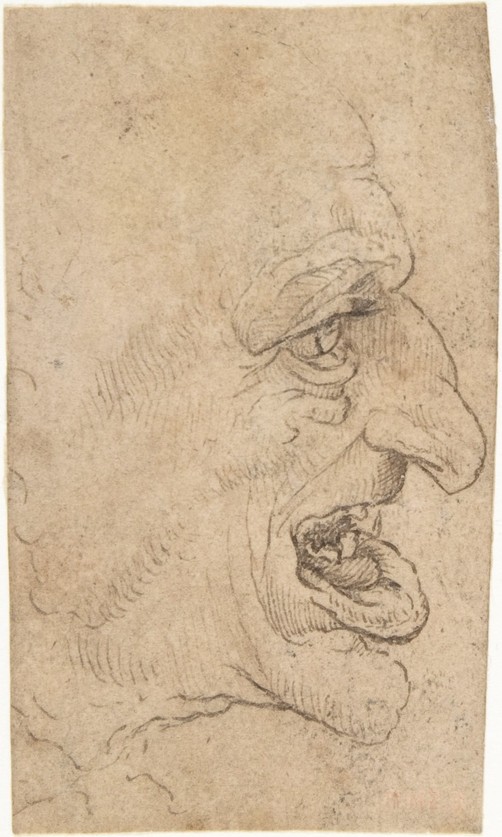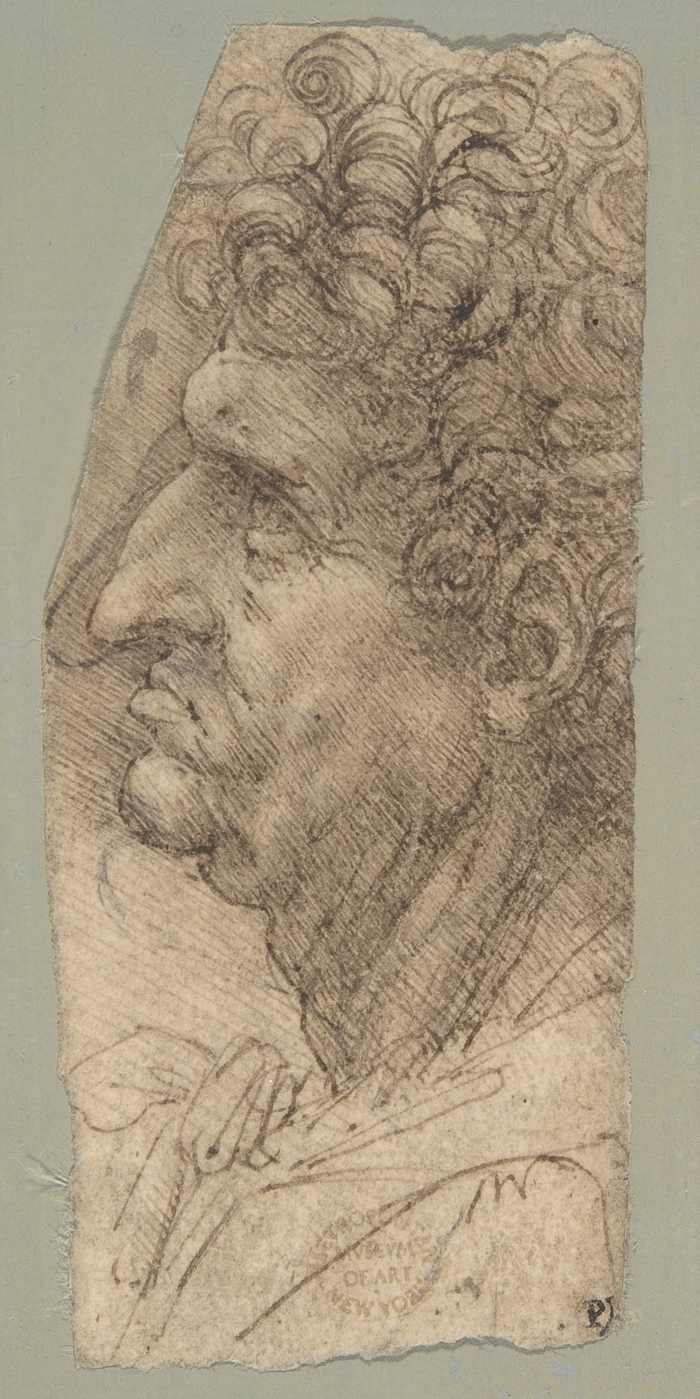Our past is behind us. Fri 01 July 2022
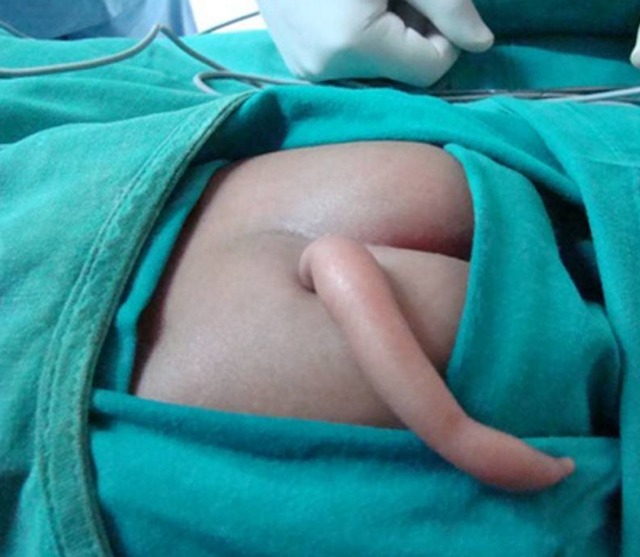
But not that far behind us. Source: What Is a Vestigial Tail?
From What Is a Vestigial Tail?:
All humans are created with a small tail that is later absorbed by the body and developed into the tailbone. In some cases, small amounts of tissue are left hanging on the tailbone area of the body.
Vestigial tails are also known as 'caudal appendages'.
But they used to have other names.
From East Anglia and the Hopkins Trials, 1645-1647: a County Guide:
Stearne claimed to have conducted a body search of Adam Sabie at the behest of some of the villagers and to have found near his fundament ‘one Teate of the greatest length that ever he sawe upon the body of any man’.
We're told 17th century witch-finders usually inspected suspects for extra nipples and for 'teats' near the anus. They were looking for what they called 'the Devil's Mark' or 'the Witch's Mark'.
From Witches Mark - History of Massachusetts:
John Clarke of Huntingdonshire, tried in 1646, who told a fellow accused witch that he was foolish to have let the authorities find his marks and that he had “cut off mine three days before I was searched.”
John's last name 'Clarke' implies he was a clerk. That is: a cleric - a record-keeper for a vicar or wicca. Three occupations that we're told suffered severe culling during England's 17th century Civil War.
Yet Devil's Marks, Witches' Marks, teates, tails and caudal appendages were still to be found after the 17th century. Sometimes in quantity.
From The human caudal appendage (human tail), Abraham Baruchin et al, British Journal of Plastic Surgery, vol 36, 1983, pp 120-123:
Virchow (1884) 1 and Miller (1881) 2 refer to the paper by Orenstein, Surgeon-General to the Greek Army, who noted so many human tails in Greek soldiers that he suggested that the fauns and satyrs of Greek mythology might have been inspired by the anomaly.
The unusual anatomies serving in the new Hellenic Army would have presented unusual challenges to uniform suppliers, quartermasters and drill sergeants. However, Orenstein's involvement also presents us with a year. His observation of soldiers with tails dates them to 1833 or later - when the Hellenic Army was rebuilt under German management.
I haven't found Orenstein's original paper but Rudolf Virchow was an evidence-based founder of modern clinical practice. If Virchow took Orenstein seriously, we can too.
Their accounts of 19th century tailed humans is what makes the claim in the next paper so disruptive.
From Human tail with occult spinal dysraphism and dermal sinus in children - ScienceDirect:
They have been... the focus of numerous mythological and religious legends in an attempt to explain the discovery of the first cases at the beginning of the 18th century.
That's very odd. If the European backstory is to be believed, teates, tails and caudal appendages were being found on many Europeans before the 18th century. Suspicion of a caudal appendage pretty much guaranteed a groping by the 17th century likes of Matthew Hopkins 3, followed by a dip in the pond and a warm-air dry-off at the stake.
Why is medical science so at odds with political science on the existence of human tails? More specifically, why are they so at odds about human tails at "the beginning of the 18th century"?
Scientific fingers point at one candidate in the years prior to the 18th century. The inexplicably strange weather that changed Earth's climate, especially in the 16th and 17th centuries. Among the as-yet undetermined event(s) that caused the cooling are several candidates with the power to tamper with the tail growth gene Wnt-3a. They include solar flare, a close brush with a comet or comet tail and/or exposure to DNA-altering Black Death virii.
All thats for scientists - academic, religious and political - to argue over. From an IHASFEMR perspective, it suggests more evidence for modern human DNA emerging around 1740.
Nor should we get hung up on human tails. Sometimes genetic mishaps near the fundament go the other way. Leaving their owner with the mysterious sacral dimple:

The gap above the crack. Source: Sacral Dimple
From Sacral Dimple:
There are no known causes for a sacral dimple. It is a congenital condition, meaning it's present at birth.
The risks of these spinal problems increase if the sacral dimple is accompanied by a nearby tuft of hair, skin tag or lump
That suggests sacral dimples, teats and tufts of hair are associated in some way. And certainly some caudal appendages are hairy.
We're not here to help solve medical mysteries but as we're in the neighbourhood, it would mean not to point out that human embryology alone suggests a possible cause for sacral dimples might be caused by the new DNA for human taillessness working too hard.
From The human caudal appendage (human tail), Baruchin et al, 1983, p122:
“There is a perfectly good tail in the human embryo up to the 18 mm stage
the proximal part becomes overgrown and disappears beneath the surface but it may persist as an ‘internal tail’.
And if it doesn't persist, what else would fill the gap above the crack?
Just a tip. But it's a serious tip: sacral dimples may themselves be more evidence that the genes for human taillessness are very, very recent. That they are evidence for evolution in motion.
While orthodoxy teaches modern humans that their ancestors used to have tails, it most definitely does not teach modern humans that their ancestors once had horns:

Source: Study of The Indus Script, Asko Parpola, p58
From Study of The Indus Script, Asko Parpola, p59:
...a male figure armed with bow and arrows, anthropomorphic apart from having a bull’s horns and tail, and with long eyes.
Or rather, humans are not taught that their DNA recently coded for horns.
And sometimes still does:
Source: 91 Year Old Woman With Horns Growing Out of Arm
Note the nub of a second horn on the right side of her forehead.
GL Rhodenburg was assistant attending surgeon at New York's Cornell University Medical College dispensary. In 1908, he added two new cases to his analysis of 197 horned humans.
From Human Horns, GL Rhodenburg, Journal of the American Medical Association, 17 October 1908, LI(16), p1326, (doi:10.1001/jama.1908.25410160036002a):
As will be seen, the greater number are found on the head; and of the various head regions, the forehead is the seat of preference.
Today, most publicly available photographs of human horns show single horns in the centre of the head:

West Asian male, single horn. Source: 91 Year Old Woman With Horns Growing Out of Arm
Quite a few papers and reports contain these photographs of horned humans. I've sourced the images shown here from one article that seemed to have the highest definition photographs.

East Asian female, single horn. Source: 91 Year Old Woman With Horns Growing Out of Arm
As with human tails, horns sometimes grow very close to the centre:
East asian male, single horn. Source: 91 Year Old Woman With Horns Growing Out of Arm
From Mystery of the horned humans:
It is believed that the horns are a 'genetic throwback', which are well documented and scientifically supported phenomena, from a time in human evolution before our ancestors had diverged away from those animals that went on to develop horns. The theory assumes that many, if not all, humans carry the genes necessary to produce horns, but in most of us they are inactive and are not used.
Rhodenburg's analysis suggested that by 1908, human horns tended to appear on older adults. Which might have made some of his patients contemporaneous with the tailled soldiers of the new Hellenic Army.
However horns and horn nubs (horn bases) may also be more common in human infants than we're led to believe.
From Human Horns: A Historical Review and Clinical Correlation, R Shane Tubbs, 2003:
It would appear that we no longer see patients with these problems because they are operated on early and never get to the "horn" stage. James T Goodrich, New York
and:
Such horns are rarely seen today, possibly because they are surgically removed early. Enrique Gerszten, Richmond, Virginia
These two quotes were taken from the peer review comments in Shane Tubbs' Human Horns: A Historical Review and Clinical Correlation.
A third comment is particularly worth noting:
Most of these horns seem to be keratin out-growths rather than bony outgrowths. Christopher BT Adams, Oxford, England
It's worth particular note because most animal horns and antlers are also keratin and not bone. Adams' quote suggests that most human horns are not bone defects; they are created by the same genetic mechanisms that create horns and antlers in animals 4.
And, as with human tails, the continuing presence of this genetic upset suggests the modification may have occurred very recently.
Besides 17th century vicar/wicca trials, 18th century tales of tails, 19th century accounts and modern medical conditions, is there any other evidence human DNA was only recently docked?
And that art and artefacts were also modified to hide it?
For example, there's the very strange history of whitewashed art recently uncovered in various churches:
Horned demons at right and left. Source: St John's Church, Corby Glen
And of changes to art works that were always (allegedly) visible to the public.
From Pieter Bruegel the Elder 1562 painting The Triumph of Death:
Monkey business atop the lynch. Source: The Triumph of Death
This image was extracted from the top right corner of the oldest version of Bruegel the Elder's The Triumph of Death. This painting's image also appear to have been docked. Later versions by Pieter Brueghel the Younger and Jan Brueghel the Younger depict the monkey figure more ambiguously or replace it with a human skeleton.
Later versions of The Triumph of Death also replaced the wheel on a pole with Christian symbolism. So that a lynching added by Jan Brueghel the Younger was later replaced by a cross. Various structures apparently built for carcass-drying and lynching were also later rendered as crosses. Similarly, while the original lynch-monkey disappeared, cowled monks appeared elsewhere in the painting.
It is as if changes to The Triumph of Death track the Romantic Movement's effort to over-write memories of tailed humans - or tailed near-humans - and human harvesting with memories of Christian mythology.
Despite the disappearance of their tail-bearing users, some of these devices could still be found in late 19th century England:

May-Day celebration. Image from approx. 1890. Source: Victorian Maypoles Celebrated Freedom - Racing Nellie Bly
Though folklorists were, by then, sanitising the pole's history:
From Victorian Maypoles Celebrated Freedom - Racing Nellie Bly:
In 1894, famed artist/illustrator Walter Crane transformed the concept of Victorian Maypoles to represent solidarity of “Labor’s May Day” for the workers of the world.
Victorian Maypoles Celebrated Freedom - Racing Nellie Bly also points out that in the same century, Romantic Movement writer John Ruskin had promoted maypoles as an instrument of fertility festivals.
Seemingly these two new purposes given to the pole-mounted wheel helped whitewash any of its associations with practical material recovery during carcass processing.
Local folklore also catches the monkey-like practices of witches. Here Leicestershire historian Rob Trubshaw reads an early 19th account of Leicester's child-hunting - and child-skinning - witch Black Annis:
Not so much a tall tale as a high tail. Source: Black Annis: Leicester's very own bogey-person
Note how the interior of Black Annis's cave sounds like the interior of the Scottish coast caves described in How Do You Get A.I. to Think For Itself? - Part Three.
A witch near Temple Bruer in Lincolnshire - Navenby's Old Meg - was also said to hide in roadside trees and pounce on victims from above.
The distinctive nose associated with witches also seems to have evolved rapidly:

Witch festival in Germany's Harz Mountains. Source: Witch Kitsch
That nose is instantly identifiable to northern Europeans. Why do Europeans associate witches with big, hooked noses?
Perhaps earlier humans were designed that way.
If so, you'd expect to find design drawings like this:
My what sharp canines you have. Source: Archive.org
This sketch is held by New York's Metropolitan Museum of Art but its provenance record claims it first showed up in a collection from Horncastle, Lincolnshire, England.
More of these long-nosed, protruding-chinned early humans are presented in Faces of Giants. They seem to date from immediately before the mysterious appearance in early 18th century Europe of:
- highly advanced anatomical and dissection techniques, and
- the sudden discovery and documentation of 'ancient' landscapes and landmarks.
Some of many English examples of these are summarised in Dating the Intelligent Pig.
Note the nose; specifically the abandoned first attempt at a nose in the next drawing. Perhaps this drawing captures a design transition toward the Roman nose - the witch's nose:
Evolution results from design mistakes. Source: Archive.org
If you know what to look for, you can see yourself when you were just a design proposal:
Vitruvian Man. Source: Vitruvian Man - Wikipedia
What does 'Vitruvian' mean?
There's an official answer: The Significance of Leonardo da Vinci’s Famous “Vitruvian Man” Drawing, which says Vitruvian means 'after Vitruvius' or 'as per Vitruvius'.
But you only need to read about Vitruvius' first translator - Cesare di Lorenzo Cesariano - to suspect that Vitruvius is probably a misdirection.
A viable alternative explanation is that 'Vitruvian' means 'From Vitro'. As in 'In Vitro'.
As in 'Test Tube Man'.
From Vitruvian Man - Wikipedia:
the work is a unique synthesis of artistic and scientific ideals
Not just 'eye of newt and tongue of frog' but an advanced understanding of how to rearrange DNA:
Spelled with the letters A, G, T and C. Source: Westworld
More:
- An infant with caudal appendage - PMC explains the DNA of tail loss and tail retention quite understandably.
And most other accounts are well worth reading:
- The human caudal appendage (human tail)
- Human tail–caudal appendage: tethered cord - Journal of Perinatology
- Human tail with occult spinal dysraphism and dermal sinus in children - ScienceDirect
- Human tails and pseudotails
- Human tail: a simple skin appendage or cutaneous stigma of an anomaly?
- Lumbar pseudo-tail associated with dermal sinus - a case report
- Human tail: a benign condition hidden out of social stigma and shame in young adult – a case report and review
- Incidental finding of a true human tail in an adult: a case report
© All rights reserved. The original author retains ownership and rights.
-
Virchow, Rudolf (1884). Tailed man, New York Medical Journal, Vol 40, p684. ↩
-
Miller, CH (1881). Tailed humanity, Medicine and Surgery Reporter, Vol 46, p165. ↩
-
In England: John Stearne, Roger Nowell, Margaret Aitken, John Cotta, Christian Caldwell, John Godbold, Henry Chauncy. ↩
-
Therefore not to be confused with bone 'horns' that grow to anchor stronger neck muscles: Australian teenagers are literally growing horns - Facebook and Australian researchers find 'horns' growing on young people's skulls from phone overuse - The Washington Post. ↩
More of this investigation:
Dating the Intelligent Pig,
More of this investigation:
The Mutant Chimp Gets a Brain,
More of this investigation:
IHASFEMR
More by tag:
#human meat, #Manimal Farm, #Tennyson Friend


